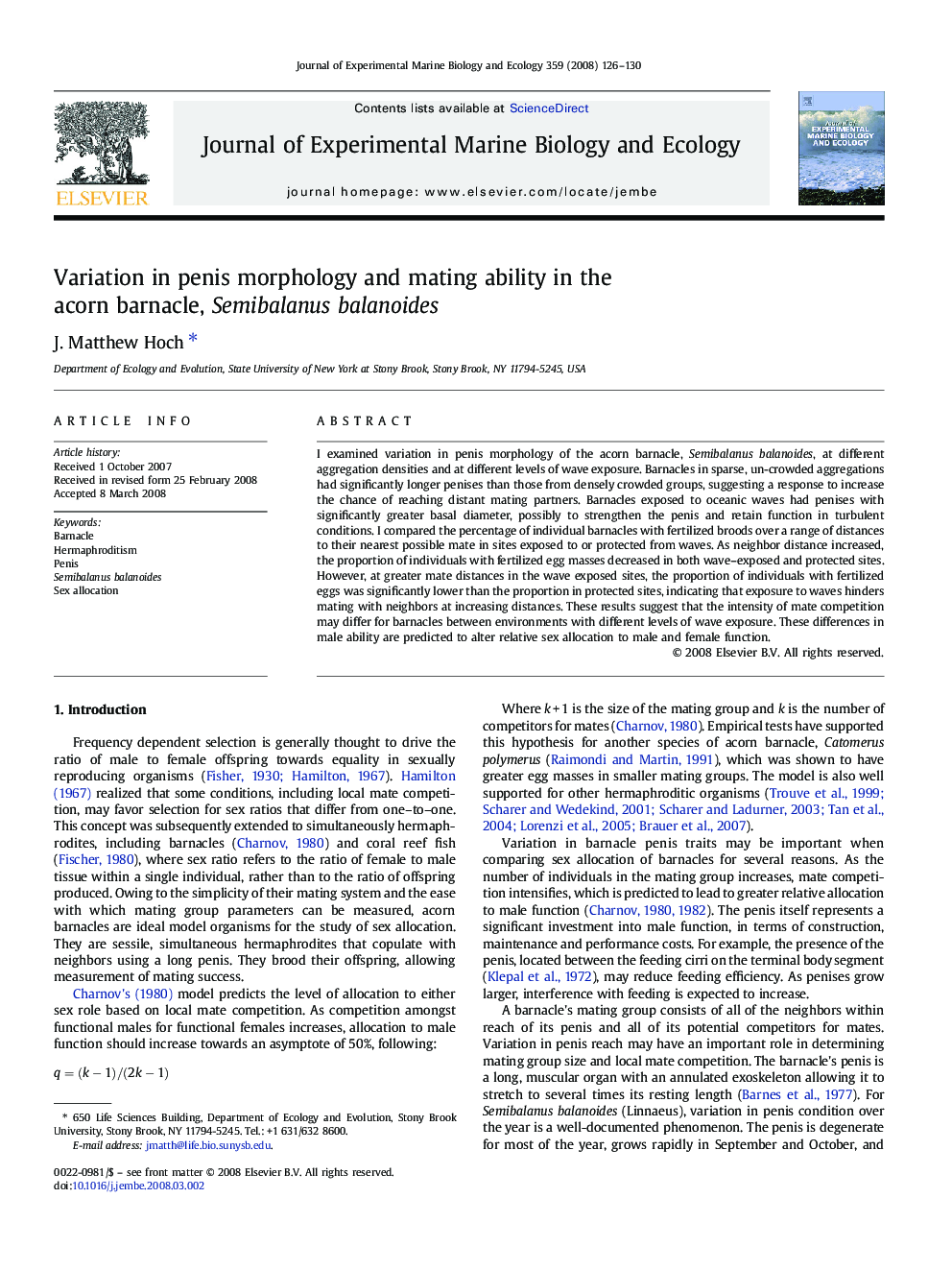| Article ID | Journal | Published Year | Pages | File Type |
|---|---|---|---|---|
| 4397345 | Journal of Experimental Marine Biology and Ecology | 2008 | 5 Pages |
Abstract
I examined variation in penis morphology of the acorn barnacle, Semibalanus balanoides, at different aggregation densities and at different levels of wave exposure. Barnacles in sparse, un-crowded aggregations had significantly longer penises than those from densely crowded groups, suggesting a response to increase the chance of reaching distant mating partners. Barnacles exposed to oceanic waves had penises with significantly greater basal diameter, possibly to strengthen the penis and retain function in turbulent conditions. I compared the percentage of individual barnacles with fertilized broods over a range of distances to their nearest possible mate in sites exposed to or protected from waves. As neighbor distance increased, the proportion of individuals with fertilized egg masses decreased in both wave-exposed and protected sites. However, at greater mate distances in the wave exposed sites, the proportion of individuals with fertilized eggs was significantly lower than the proportion in protected sites, indicating that exposure to waves hinders mating with neighbors at increasing distances. These results suggest that the intensity of mate competition may differ for barnacles between environments with different levels of wave exposure. These differences in male ability are predicted to alter relative sex allocation to male and female function.
Related Topics
Life Sciences
Agricultural and Biological Sciences
Aquatic Science
Authors
J. Matthew Hoch,
